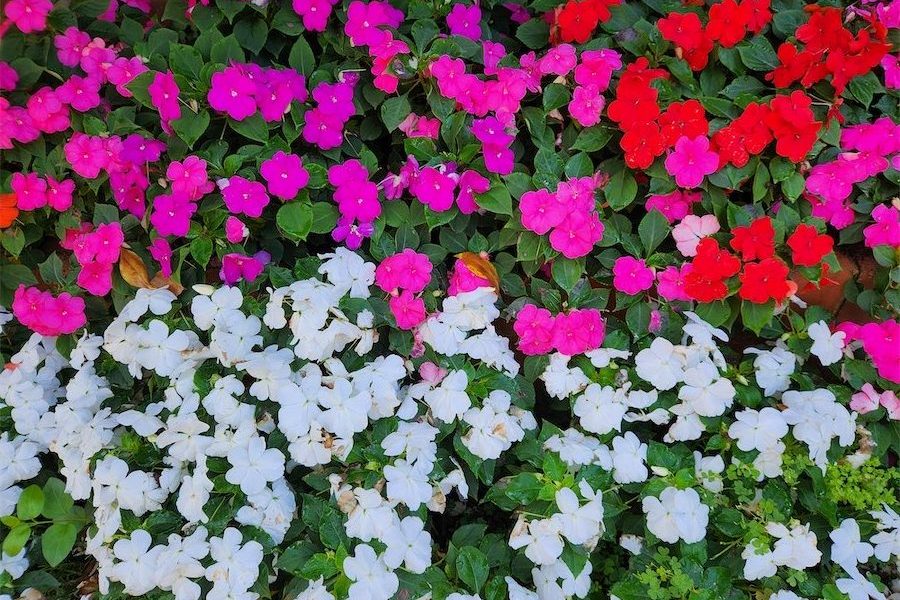
Gardening columnist JACKIE WARBURTON is focusing on a small, colourful plant that’s perfect for a summer garden but won’t be around when the frosts come.
Impatiens are a frost-tender perennial in Canberra.

These small plants – Impatiens walleriana – are perfect for potted colour in the garden as a border from spring to late autumn or as an indoor bowl or hanging basket.
As indoor plants, they need only dappled light, but they’re definitely not for kitchens or bathrooms where there is likely to be humidity.
The best variety for indoors is the New Guinea Impatiens (Impatiens hawkeri) because it tolerates more shade than its counterpart.
It has a carefree growth habit and its colour range is vast with the most common being red, pink and white. To keep it blooming through the season, it needs a good amount of water and slow-release fertiliser, with a top up of a foliar feed over the leaves every now and then.
It doesn’t mind a tip prune to keep it compact and flowering through summer.
Impatiens can be attacked by pests if their growing conditions are not right. The most common insects to look out for are thrips and aphids, which can be kept at bay with an organic insecticide.
The other main issue for impatiens is powdery mildew, which presents on the leaves as grey spots. It can be an issue towards the end of the season and indicates there is little airflow around the plant. Plants affected by fungal issues should be disposed of in the green bin and not the compost bin to prevent fungal spores from spreading.
Impatiens can also be grown by seed if you have the patience, but the better option is to grow as a cutting. So, when deadheading, cut long stems and place in water to take root. After a few weeks, they can be potted up in a potting mix and kept indoors until spring.

HERE’S an unusual lime-green, dense, mossy-looking native ground cover that grows slowly over rocks and hard surfaces. Scleranthus biflorus makes a striking addition to an Asian, native or rockery garden.
Scleranthus are a petal-less flowering plant with miniature yellow/straw-coloured flowers. To grow well they need at least six hours of full sun with good moisture.
They are native to the alpine areas of Australia and NZ, and also to coastal NSW and Victoria. They’re not fussy with soils, but need lots of organic matter to grow well. They’ll begin to yellow if there’s too much water or not enough sun. They can be divided using a sharp spade or trowel.
Jottings
- Plant coriander as the soil cools.
- Sow broad beans in fallow spaces in the veggie patch.
- Get compost bins ready for autumn leaves.
- Bring frost-tender plants indoors before frosts.
Who can be trusted?
In a world of spin and confusion, there’s never been a more important time to support independent journalism in Canberra.
If you trust our work online and want to enforce the power of independent voices, I invite you to make a small contribution.
Every dollar of support is invested back into our journalism to help keep citynews.com.au strong and free.
Thank you,
Ian Meikle, editor





Leave a Reply